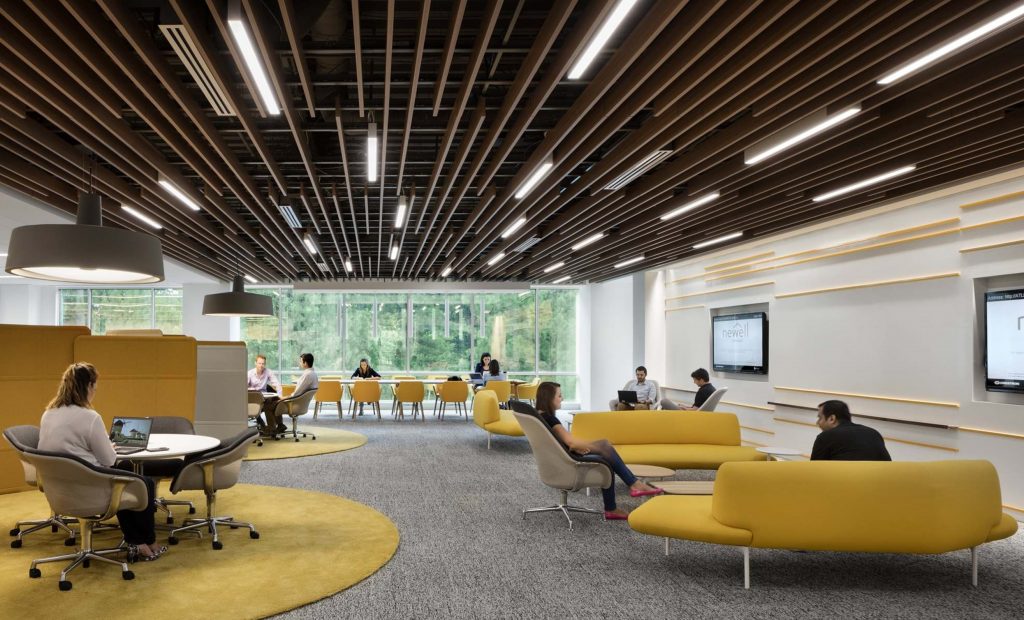
As the world continues the battle against COVID-19, the majority of the global population remains confined to their homes in an effort to follow social distancing measures. For business and property owners, it reinforces why indoor environmental quality should be a priority for every building and interior space.
Indoor Environmental Quality (IEQ) refers to the quality of a working, living, or learning environment in relation to the health and well-being of people. Clean indoor air, thermal comfort, good illuminance including daylighting, acoustics, non-toxic materials, and ergonomic furniture are some of the factors that influence IEQ and, therefore, our health.
Improving and protecting the health of building occupants have long been a primary goal of Leadership in Energy and Environmental Design (LEED) where people, planet, and profit make up the Triple Bottom Line philosophy. In addition, the IEQ concept helps the project and property management teams assess how well buildings and interior spaces are performing for occupants.
Here are some LEED strategies related to indoor environmental quality that every property owner, facility manager, architect, and engineer should prioritize.
1. Integrative Process for Health Promotion. This assists new construction and project teams in more comprehensively addressing health from the beginning of a project. It encourages an early analysis of the interrelationships among building systems and requires projects to bring on a public health partner to advise on the implications of strategies and design.
2. Enhanced Indoor Air Quality Strategies. Managing mechanically and naturally ventilated spaces can help improve indoor air quality in new and existing buildings. Enhanced strategies can help teams address interior and exterior cross-contamination, pollutants control and entryway systems, filtration issues, and microbial disinfection.
3. Construction Indoor Air Quality Management Plan. To promote the well-being of construction workers and building occupants, LEED helps building teams minimize indoor air quality problems associated with construction and renovation.
4. Low-VOC Materials. By using products that meet the low-VOC (Volatile Organic Compounds) criteria during construction and renovation, project and property management teams are reducing concentrations of chemical contaminants that can damage air quality, human health, productivity and the environment.
5. Contaminant Control. To reduce occupants’ exposure to indoor airborne contaminants, building and property management teams can take advantage of several opportunities in on-going source control and elimination.
6. Performance-based Indoor Air Assessment. By conducting baseline testing and ongoing monitoring of indoor air quality, existing buildings can find ways to reduce potential health impacts to occupants that arise from exposure to indoor air microbes and harmful compounds.
7. Green Cleaning. LEED helps property management and facility teams adopt Best Management Practices (BMPs) that reduce levels of chemical, biological and particulate matters that can compromise human health, as well as building finishes and the environment. These effective cleaning procedures, including sustainable purchasing methods, help address custodial effectiveness, entryway systems and powered janitorial equipment.
These past few weeks have certainly showed us the importance of our health, and of course, our lives. Indoor Environmental Quality both for LEED and non-LEED properties has demonstrated its intention to further protect and enhance people’s health. Maintaining cleaner, sterile air for interiors and how it affects the surrounding workplace and neighboring spaces, is one of the best safeguards for busy working individuals to endure the current pandemic situation. Property owners and landlords may adopt these strategies, to reach out and think about how they can adapt and do their work differently. Despite the great uncertainty of the weeks and possibly months ahead, we must keep moving forward and be the advocates of welfare and health. Taking our time to listen and observe, we must focus on absorbing the present so that when we plan for our healthy future, we remember the past and learn from it.
If you wish to have a private chat about adopting wellness, health, and sustainability initiatives in your workplace and property, contact Eric.Bautista@Santos.KnightFrank.ph for inquiries.


